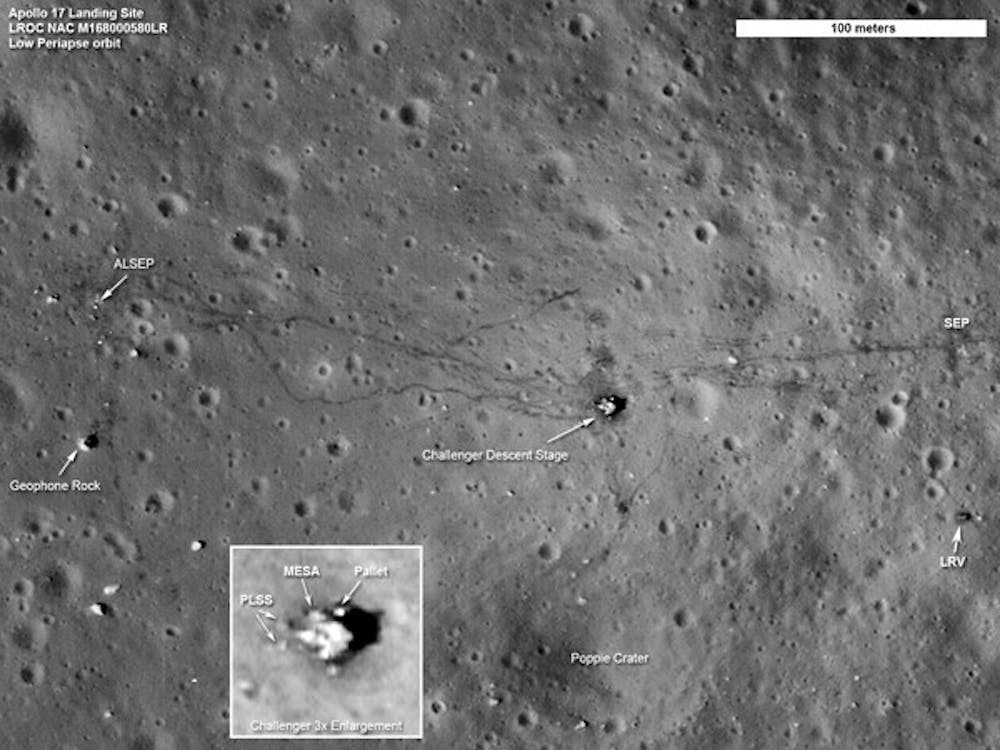The highest resolution photos ever taken of the moon were developed last month by a group of ASU scientists and students.
The team, headed by professor Mark Robinson of the School of Earth and Space Exploration, announced the mission’s success at a NASA press conference on Sept. 13.
ASU partnered with NASA to help map out different regions of the moon’s surface. This will in turn help the space program decide on the safest and most intriguing locations on the moon for future exploration.
This latest photo shoot of the moon was not the group’s first experience in this endeavor. Robinson’s team initially released photographs of the moon taken from an unmanned camera orbiter shooting from 50 km off the moon’s surface more than two years ago.
“We have been in orbit since June 2009,” Robinson said. “What was really special about this particular set of photographs was that the spacecraft was lowered from a 50 km orbit to a 25 km orbit. This resulted in a sharpened resolution that is two times higher than anything we’ve been getting before.”
In addition to the hard work of Robinson’s staff, the most important tool in the procurement of these pictures was made possible by the performance of the unmanned orbiter spacecraft known as the Lunar Reconnaissance Orbiter Camera or L-ROC.
The success of L-ROC rests on the shoulders of many contributing individuals, including a large number of ASU students.
“This information will help us with future research,” planetary graduate student Sarah Braden said. “It’s good to know that the information we’re helping to research will make a difference.”
In this most recent set of photos, L-ROC successfully snapped 1,500 ultra sharp images of various points of interest along the moons surface. Of the pictures taken, the shots that have gained the most public attention are the three images of the Apollo 12, 14 and 17 landing sites.
“Part of the interest in the landing sites photos stems from the regret that we no longer have the ability (to send astronauts to the moon) because we as a nation chose to give up that capability,” Robinson said.
All of these photos are in the process of scientific evaluation by Robinson’s team.
So far, the initial wave of photo analysis has signaled a flood of new information about the moon. The most pertinent information being culled from these photos regards the investigation of suitable landing sites for future NASA missions. The data secured from these photos will be critical to NASA and will prove invaluable in finding safe landing spots for future moon exploration missions.
“It’s really exciting,” Robinson said of the photos. “You could identify equipment that was left on the surface and you could see trails that the astronauts had made while they were walking around exploring the moon.”
Building on the recent accomplishments of the space exploration school is the development of programs meant to educate those interested in joining the field of interplanetary exploration.
Business communications senior Laura Fisher is the public relations outreach chief of Robinson’s team.
“We’ll be holding several events open to the public over the course of the year,” Fisher said. “This includes a new exhibition about the Hubble telescope that we’ll be holding at the Mesa Historical Museum. Additionally, we’ll be hosting several astronomy open houses.”
Reach the reporter at mjgordo1@asu.edu
Click here to subscribe to the daily State Press newsletter.





